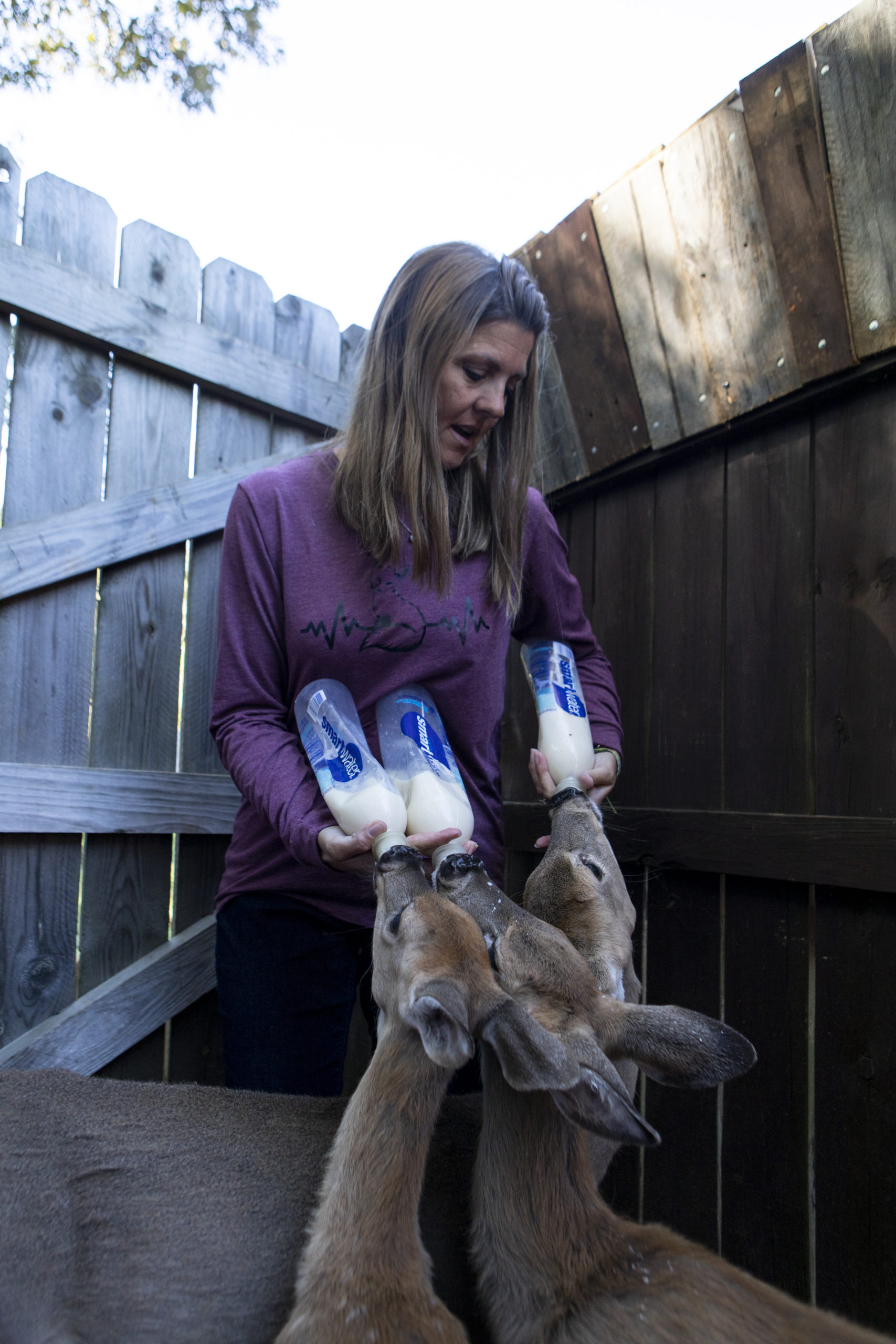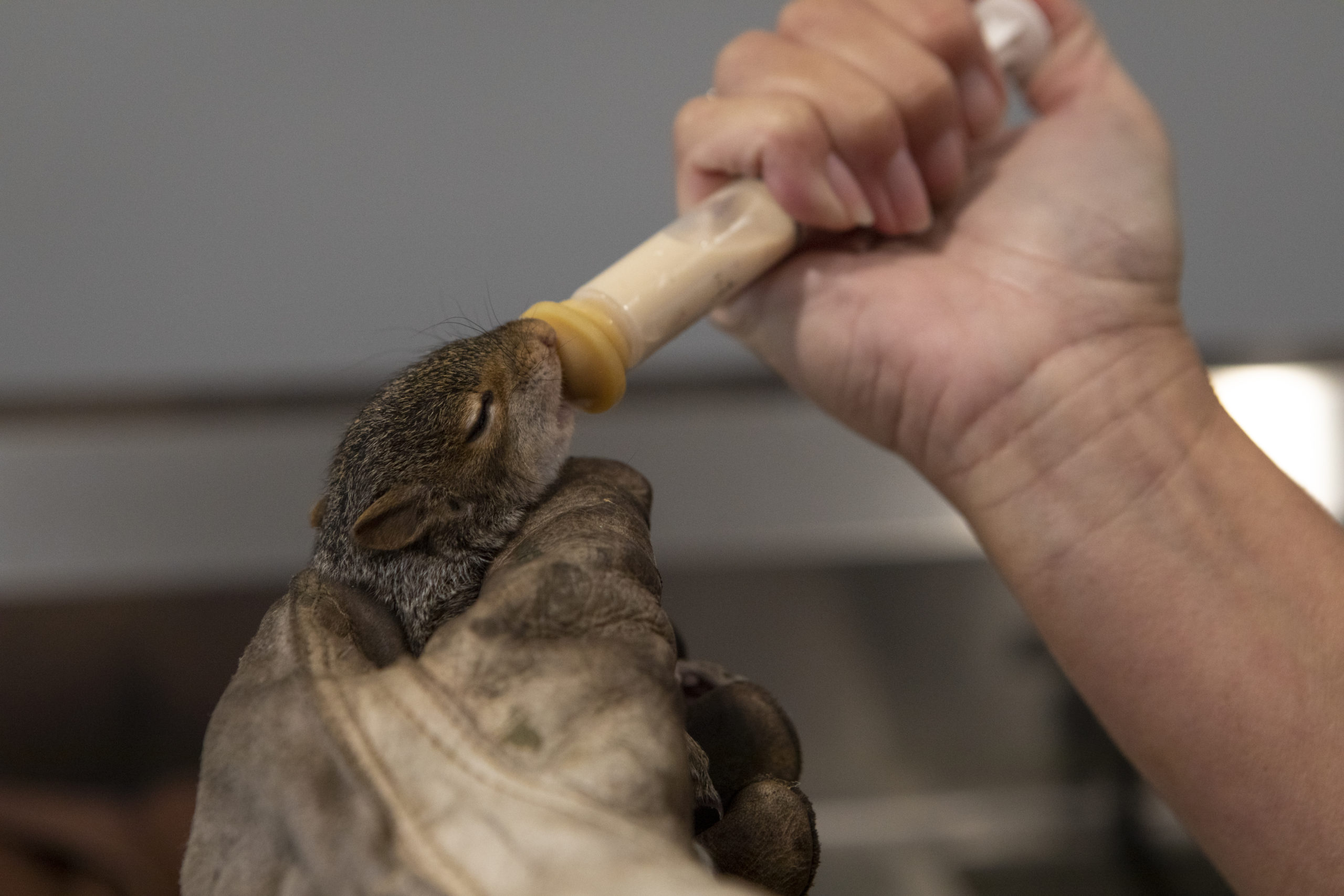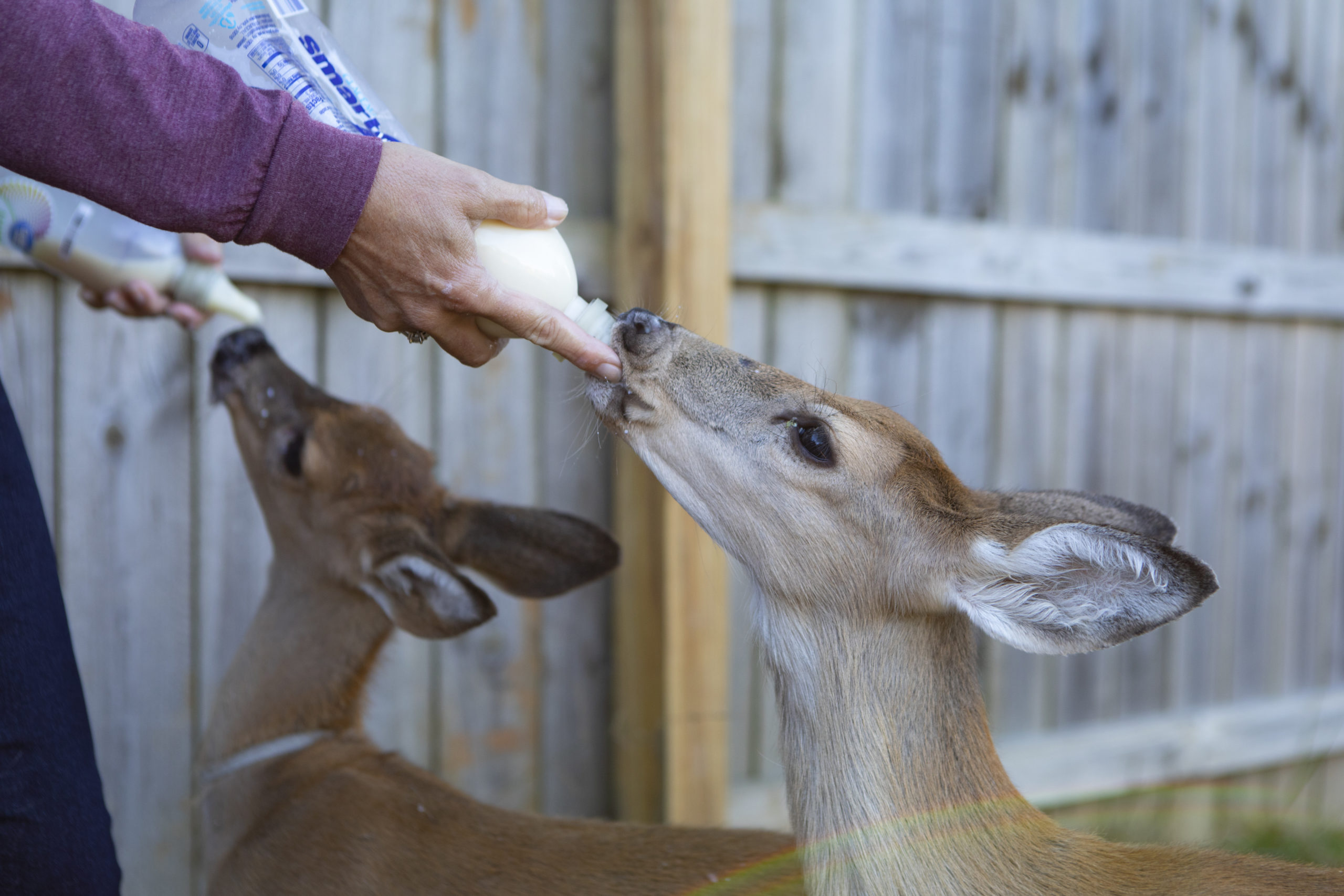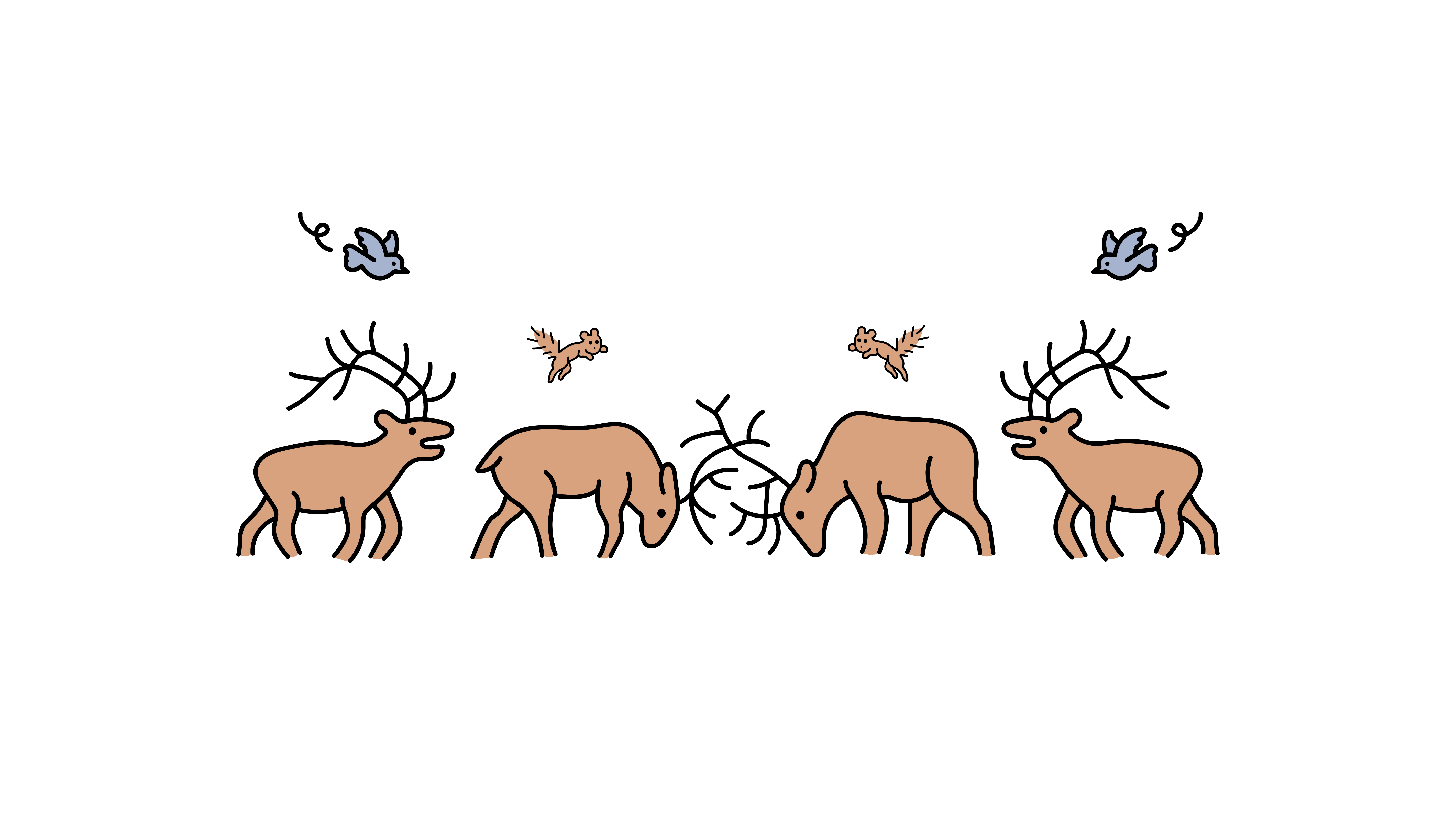Around 10 years ago, Lori Dawson didn’t know that her dog’s squirrel chase would begin her path as an animal rehabilitator.
She noticed the suffering baby squirrel and immediately tried finding a place that would care for it. After finding out the closest facility was two hours away, Dawson took it upon herself to learn about caring for the helpless animal. Dawson’s friends took notice of her ability and began finding more squirrels who needed her help. At one point, they had 20 squirrels, Dawson said.
There is a cost to caring for animals and Dawson needed donations to keep her budding wildlife rescue center alive. She was certified as an animal rehabilitator in 2015 by the International Wildlife Rehabilitation Council, after taking classes in medicinal practices and habitat care. With license in hand, Dawson created the non-profit wildlife rehabilitation center Wild 4 Life with the intention of nursing animals back to health to release them back into their habitat. A member of the Kentucky Department of Fish and Wildlife Resources visits Dawson once a year for a routine inspection to renew her license.
Dawson said it takes a lot of time and money to care for the animals properly. She spends roughly $10,000 to $15,000 on food and medicine per year.
Spanning across 50 acres of land in Bowling Green, Wild 4 Life cares for almost 400 wild animals a year. Each animal has a designated enclosure and is cared for individually. Dawson continues to care for squirrels as well as possums, raccoons, rabbits, beavers, groundhogs, and Dawson’s two favorites, foxes and deer.
Dawson said that state police, and the Kentucky Department of Fish and Wildlife Resources, community members and those on the Wild 4 Life Facebook page reach out to her. Dawson keeps the community informed about caring for wildlife in Kentucky and has held educational programs for the Warren County Humane Society and schools like WKU.
Informed community members report injured or sick animals, and Dawson comes to the rescue. She normally works 25 to 30 hours a week and almost 40 at the peak of her season. Dawson said it gets frustrating at times, and nothing is ever easy. The future lives of these animals is what keeps Dawson passionate.
“I love getting to see them live on, knowing that because of what I do, they can be wild,” Dawson said.




